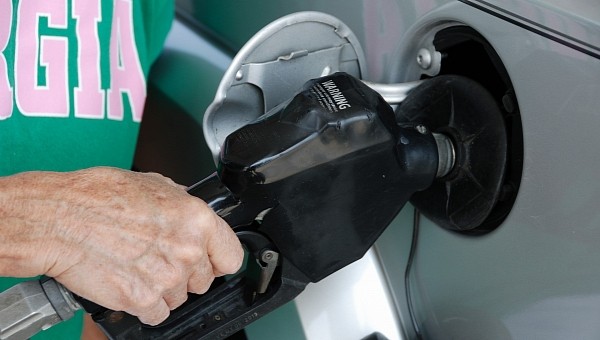Many car owners tend to overfill the fuel tank, especially during road trips. Although this might delay the moment you have to pull over at a gas station, it might also hasten your next service appointment.
When it comes to filling up a tank, there are two driver categories: those who pump as little as possible, believing they save money, and those who top up the tank to the brim, thinking they save time. They say time is money, but in these cases, both time and money may be lost. In the first case, running low on fuel can overheat the fuel pump in the tank. In the latter, because too much fuel is also detrimental. So much, so that General Motors has issued a warning about this practice.
The fuel pump nozzles have an automatic shutoff system that cuts the fuel flow when the tank fills up. If not for that, the gas would overflow, leading to dangerous situations. But the system can be tricked by starting to pump again after the automatic system goes off (“clicks”). In that case, more gas is filled into the tank, and you can continue to click the pump until you see the fuel coming up. This might make the car go a few miles further without refueling, but it can also cause a lot of trouble.
According to GM, overfilling the gas tank on its vehicles beyond three clicks past the automatic fuel nozzle shutoff could make liquid fuel enter the evaporative emissions (evap) system vapor lines. When it happens, the fuel could block the recirculation line and result in fuel tank pressure sensor reading issues. An expensive intervention is needed to clean the lines before the fueling system works again as intended.
The situation gets worse in the case of 2019 through 2023 Cadillac XT4 models and 2021 through 2023 Buick Envision models equipped with the turbocharged 2.0L inline-four LSY gasoline engine. These vehicles are equipped with a capless refueling system, and overfilling the tank may result in a “check engine” light in the dashboard, as well as a diagnostic trouble code (DTC) P0451 (Fuel Tank Pressure Sensor Performance).
According to GM Authority, GM has issued service bulletin #22-NA-203 for these situations, describing the measures necessary to correct the issues. A certified GM technician is required to inspect the three vent lines at the fuel tank for damage, remove any contamination present, and drain any fuel from the evap vent lines if needed.
The fuel pump nozzles have an automatic shutoff system that cuts the fuel flow when the tank fills up. If not for that, the gas would overflow, leading to dangerous situations. But the system can be tricked by starting to pump again after the automatic system goes off (“clicks”). In that case, more gas is filled into the tank, and you can continue to click the pump until you see the fuel coming up. This might make the car go a few miles further without refueling, but it can also cause a lot of trouble.
According to GM, overfilling the gas tank on its vehicles beyond three clicks past the automatic fuel nozzle shutoff could make liquid fuel enter the evaporative emissions (evap) system vapor lines. When it happens, the fuel could block the recirculation line and result in fuel tank pressure sensor reading issues. An expensive intervention is needed to clean the lines before the fueling system works again as intended.
The situation gets worse in the case of 2019 through 2023 Cadillac XT4 models and 2021 through 2023 Buick Envision models equipped with the turbocharged 2.0L inline-four LSY gasoline engine. These vehicles are equipped with a capless refueling system, and overfilling the tank may result in a “check engine” light in the dashboard, as well as a diagnostic trouble code (DTC) P0451 (Fuel Tank Pressure Sensor Performance).
According to GM Authority, GM has issued service bulletin #22-NA-203 for these situations, describing the measures necessary to correct the issues. A certified GM technician is required to inspect the three vent lines at the fuel tank for damage, remove any contamination present, and drain any fuel from the evap vent lines if needed.






